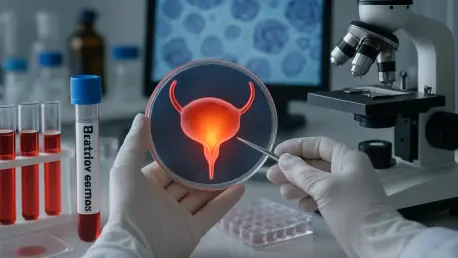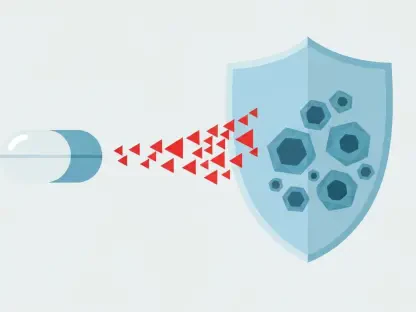As we delve into the complex world of cancer biology, I’m thrilled to speak with Ivan Kairatov, a renowned biopharma expert with extensive experience in research and development. Ivan’s deep knowledge of technology and innovation in the industry offers unique insights into groundbreaking studies, particularly those exploring the early cellular changes linked to diseases like bladder cancer. Today, we’ll explore how factors such as smoking and biological sex influence these early changes, the innovative methods used to detect them, and the potential implications for prevention and early detection.
Can you begin by sharing what drew you to study early cellular changes in bladder cancer, particularly in healthy tissue rather than tumors?
Absolutely, Julia. My research has always been driven by the idea that understanding the very first steps of a disease can unlock new ways to prevent or intervene early. Bladder cancer, like many cancers, takes decades to develop, so by the time we see tumors, a lot has already happened at the cellular level. Focusing on healthy tissue allows us to see those initial mutations and evolutionary processes before they turn malignant. It’s like looking at the seeds of a problem before it grows into a full-blown issue, giving us a chance to understand risk factors like smoking or sex differences right at the start.
Why do you think it’s so critical to understand these early stages before cancer fully develops?
It’s critical because those early stages are where we can make the biggest impact. Once cancer develops, treatment becomes more complex and less certain. But if we can map out how mutations accumulate and which ones gain an advantage in healthy tissue, we can potentially predict who’s at higher risk and intervene much sooner. For bladder cancer, where men and smokers are disproportionately affected, understanding these early changes could guide personalized prevention strategies or early diagnostic tools, ultimately saving lives.
Your research highlights a stark difference in bladder cancer risk between men and women. Can you explain how biological sex influences these early cellular changes?
Certainly. We’ve observed that men are about four times more likely to develop bladder cancer than women, and our findings suggest this isn’t just due to lifestyle factors. In healthy bladder tissue from male donors, certain mutations in cancer-related genes seem to have an evolutionary edge, meaning they’re more likely to expand into clones—essentially, copies of mutated cells. This selective advantage in men could be tied to hormonal or genetic differences, though we’re still unraveling the exact mechanisms. It’s a key piece of the puzzle in understanding why men are at higher risk.
Smoking is often cited as a major risk factor for bladder cancer. How does it impact healthy bladder tissue at the cellular level?
Smoking has a profound effect, and our research shows it’s not just about causing new mutations—it also promotes the growth of existing ones. In healthy bladder tissue, especially in donors over 55 with a smoking history, we see a higher frequency of specific mutations, like those in the TERT promoter, which helps cells keep dividing by reactivating a protein called telomerase. Essentially, smoking acts as both a mutagen, introducing DNA damage, and a clonal promoter, helping mutated cells outcompete their neighbors. This dual role makes it a particularly dangerous risk factor even before cancer appears.
You’ve used a novel approach to detect mutations in healthy tissue. Can you break down how this method works in simple terms?
I’m happy to explain it. Think of traditional DNA sequencing as looking at the night sky with a basic telescope—you see the brightest stars, but miss the fainter ones. Our new approach is like using a much more powerful tool, allowing us to detect tiny, rare mutations in healthy tissue that were previously invisible. We analyze small samples of bladder tissue with ultra-sensitive techniques to pick up thousands of mutations and see how they’re distributed. This gives us a clearer picture of how cells evolve over time, long before a tumor forms.
Your findings show that some mutated cells grow faster and form clones in healthy tissue. What does this tell us about the potential development of bladder cancer?
This is a crucial insight. When mutated cells form clones, it means they’ve gained some kind of advantage that lets them multiply faster than surrounding cells. In the context of bladder cancer, these expanding clones in healthy tissue could be the precursors to malignancy. Over time, as they accumulate more mutations or encounter triggers like smoking, they might tip over into cancer. Understanding this clonal expansion helps us see why some people progress to disease while others don’t, and it varies by factors like sex and smoking history—men and smokers often show more of this clonal growth.
Looking ahead, how do you envision your research contributing to predicting or preventing bladder cancer?
I’m really optimistic about the potential here. By identifying these early mutational patterns and clonal expansions, we could develop tools for risk prediction, possibly using something as non-invasive as urine samples to detect these changes. For prevention, especially in high-risk groups like men and smokers, our findings could inform targeted interventions—whether that’s lifestyle changes, closer monitoring, or even new therapies to halt clonal growth. It’s about shifting the focus from treating cancer to stopping it before it starts.
What is your forecast for the future of bladder cancer research and prevention strategies?
I believe we’re on the cusp of a major shift in how we approach bladder cancer. With advances in detecting early changes, like the methods we’ve developed, I foresee a future where risk assessment becomes much more personalized and precise. We’ll likely see broader studies across different tissues and risk factors, building a comprehensive map of how cancer begins. For prevention, I expect innovations in non-invasive diagnostics and maybe even drugs that target these early clones. It’s an exciting time, and I think within the next decade, we could significantly reduce the burden of this disease through early intervention.









